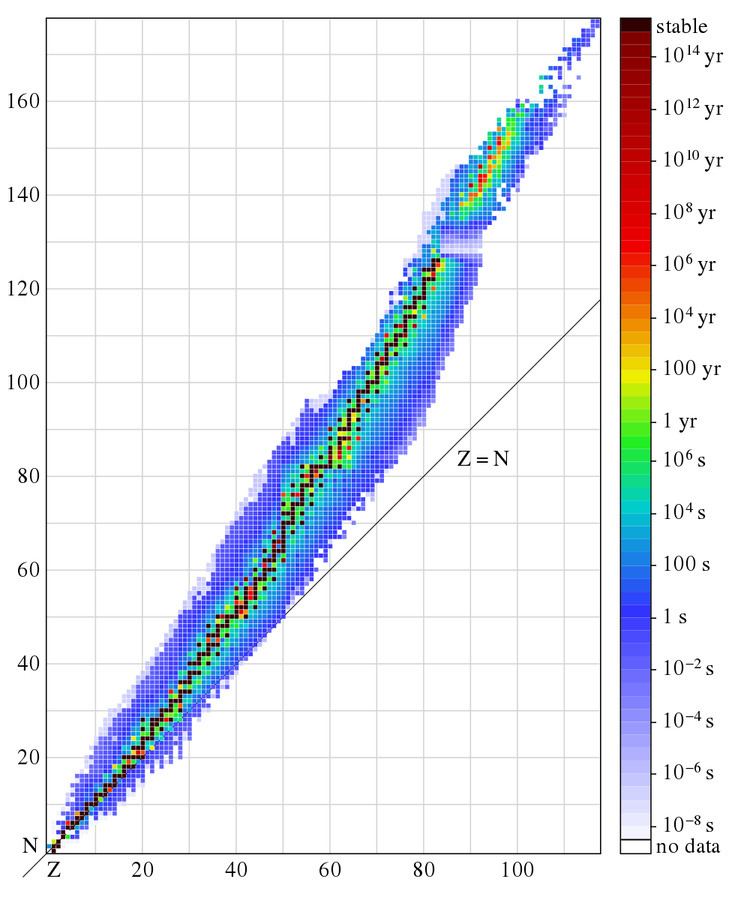 | ||
The neutron number, symbol N, is the number of neutrons in a nuclide.
Atomic number (proton number) plus neutron number equals mass number: Z+N=A. The difference between the neutron number and the atomic number is known as the neutron excess: D = N - Z = A - 2Z.
Neutron number is rarely written explicitly in nuclide symbol notation, but appears as a subscript to the right of the element symbol. In order of increasing explicitness and decreasing frequency of usage:
Nuclides that have the same neutron number but a different proton number are called isotones. This word was formed by replacing the p in isotope with n for neutron. Nuclides that have the same mass number are called isobars. Nuclides that have the same neutron excess are called isodiaphers.
Chemical properties are primarily determined by proton number, which determines which chemical element the nuclide is a member of; neutron number has only a slight influence.
Neutron number is primarily of interest for nuclear properties. For example, actinides with odd neutron number are usually fissile (fissionable with slow neutrons) while actinides with even neutron number are usually not fissile (but are fissionable with fast neutrons).
Only 57 stable nuclides have an odd neutron number, compared to 200 with an even neutron number. No odd-neutron-number isotope is the most naturally abundant isotope in its element, except for beryllium-9 which is the only stable beryllium isotope, nitrogen-14, and platinum-195.
Only two stable nuclides have fewer neutrons than protons: hydrogen-1 and helium-3.
